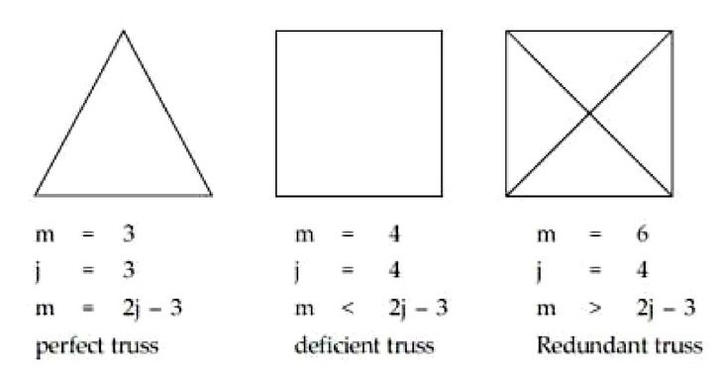Redundant Truss
By BYJU'S Exam Prep
Updated on: September 25th, 2023

A Redundant Truss can provide more stability than a perfect or deficient truss. A truss is a structural member designed mainly with steel structures and can take only axial load. A truss is designed by connecting the members with the smooth pins; due to this type of connectivity of members, a truss structure cannot resist the bending load acting over it. Based on the structure of a truss, it can classify as the perfect truss, redundant truss and deficient truss structure. In this article, we will mainly focus on the redundant truss structure.
In a truss structure, members may be just sufficient; less or more than that are required to transfer the load smoothly. Based on the member of a truss, If the number of members in a truss is more than what is required, then in such cases, the truss is called a redundant truss.
Table of content
What is a Redundant Truss?
A redundant truss is a type of truss in which the member of the truss is more than required. Those extra members in the truss are called redundant members of the truss. Due to these extra members, it becomes impossible to find the unknown forces in all the members with the help of simple equilibrium equations. A redundant truss is an important part of the GATE CE syllabus. In a truss structure number of members of a truss can be calculated as; m = 2j – 3. Where j is the number of joints in the truss and m is the number of members required in the truss. Here 3 represents that initially, 3 members of a truss are required to make a triangle, which will be a stable structure.
A redundant truss is the most stable type of truss as in a such type of truss, more members are present. We can say that in a redundant truss number of members will be more than 2j – 3. Such a type of truss is an indeterminate type of truss and requires compatibility equations for their analysis. Removal of the redundant member of a truss doesn’t affect the overall stability of the truss structure.
Degree of Static Indeterminacy of a Redundant Truss
The degree of static indeterminacy is the number of unknowns in the structure over the available equilibrium equations in the whole structure. There are 3 equilibrium equations; for a space structure, there are 6 equilibrium equations available. These equilibrium equations consist of the structure’s horizontal, vertical, and moment equilibrium.
In a redundant truss structure, more members are available than required for a perfect truss. In the GATE question paper, a redundant truss structure can be used for MSQ-based questions. An analysis of the redundant types of trusses can not be done with the help of only equilibrium equations; it requires some compatibility conditions. There are determinate and indeterminate structures. So such a type of truss is an indeterminate structure. The degree of redundancy of such a truss depends on the number of redundant members, which can be calculated by the formula m= 2j – 3.
Download Formulas for GATE Civil Engineering – Fluid Mechanics
Different Forms of a Truss
As we discussed earlier, a truss structure is a well-connected member. These members are connected by smooth pins, allowing rotation about their points. And the required member of a truss can be calculated as m = 2j – 3. So, the classification of a truss can also be carried out based on the available members in a truss structure. Forms of a Truss are important for forming NAT-based questions in the GATE exam. Based on the available members in the truss, it can be categorized into 3 types which are described as follows:
Perfect Truss: A truss’s members are just as sufficient as required to transfer the loads in such a truss structure. It can be expressed as m = 2j – 3.
Deficient Truss: In such a truss structure, a truss’s members are less than required to transfer the loads. It can be expressed as m < 2j – 3.
Redundant Truss: In such a truss structure, a truss’s members are more than required to transfer the loads. It can be expressed as m > 2j – 3.
Download Formulas for GATE Civil Engineering – Environmental Engineering
Difference Between Redundant Truss And Deficient Truss
Deficient and redundant trusses are both forms of a truss structure based on the available members in a truss. Here are a few differences between them are listed below:
- A redundant truss is a stable truss, while a deficient truss is an unstable type.
- A deficient truss can be analyzed with the help of equilibrium equations alone, and a redundant truss requires compatibility equations along with the equilibrium equations for their analysis.
- A redundant truss is an indeterminate structure, while a deficient truss is an unstable structure.
- A redundant truss can train its shape, while a deficient truss can not retain its shape during load application.
Example of Redundant Truss
Till now, we have been able to know whether the truss is perfect, redundant, or deficient. This will be understood only with the help of calculating the member in the truss structure and comparing it with the m = 2j – 3. It will be more clear by solving an example based on the redundant truss. Here such an example is shown that enhances the concepts of redundant trusses and makes an understanding of perfect and deficient trusses.



